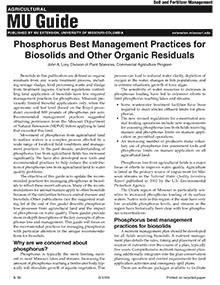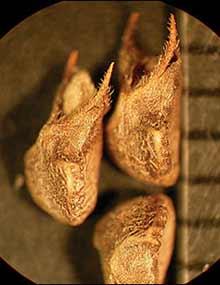

Missouri Weed Seeds, Page 29
Reviewed
Several species of Malvaceae (Mallow family) are among the most common broadleaf weeds in Missouri. These include velvetleaf and prickly sida. Cotton is also a member of this family.
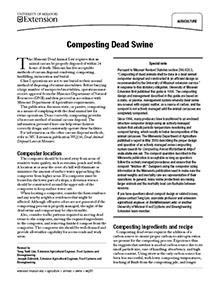
Composting Dead Swine
Reviewed
Teng Teeh Lim
Extension Agricultural Engineer, Food Systems and Bioengineering
Joseph Zulovich
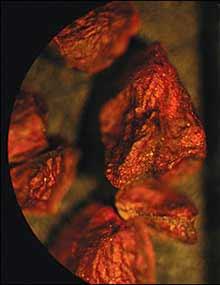
Missouri Weed Seeds, Page 32
Reviewed
Primrose is a common member of Onagraceae (Evening primrose family) with approximately 14 different species present in Missouri.
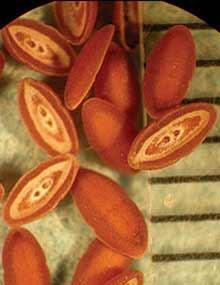
Missouri Weed Seeds, Page 35
Reviewed
Plantaginaceae (Plantain family), known collectively as plantains, has about 11 species in the state.

Missouri Weed Seeds, Page 03
Reviewed
Aizoaceae is a small family of plants. Other than carpetweed, only two species of plants in this family are known to occur in relatively isolated locations in Missouri.
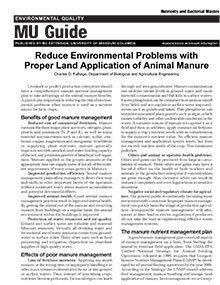
Reduce Environmental Problems With Proper Land Application of Animal Manure
Reviewed
Livestock or poultry production enterprises should have a comprehensive manure nutrient management plan to take advantage of the animal manure benefits. A plan is also important in reducing the risk of environmental problems when manure is used as a nutrient source for farm crops.
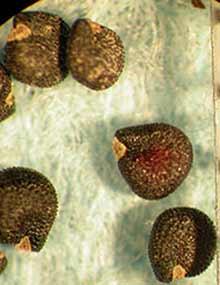
Missouri Weed Seeds, Page 38
Reviewed
Of 20 genera known within Portulacaceae (Purslane famiy), there are only three present in the state. Purslane is the most common among them.

Calibrating Manure Spreaders
Reviewed
Land application is the primary means of using livestock wastes in Missouri. Properly spreading manure on cropland is an environmentally acceptable means of managing wastes and, at the same time, realizing a benefit from the manure's fertilizer value.
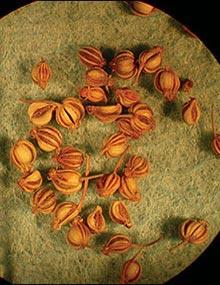
Missouri Weed Seeds, Page 06
Reviewed
Apiaceae (Carron family), also known as the parsley family, is a large family that includes several herbal plants, such as caraway, dill and fennel. It also contains several toxic plants, such as poison hemlock and water hemlock.
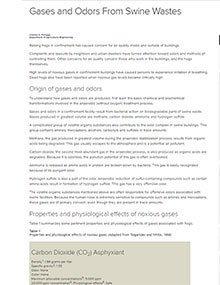
Gases and Odors From Swine Wastes
Reviewed
Raising hogs in confinement has caused concern for air quality inside and outside of buildings.
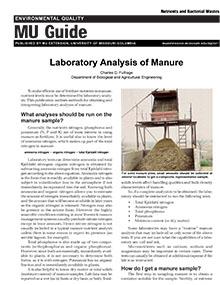
Laboratory Analysis of Manure
Reviewed
Learn methods for obtaining and interpreting laboratory analyses of manure to make efficient use of fertilizer nutrients in the manure in this University of Missouri Extension guide.
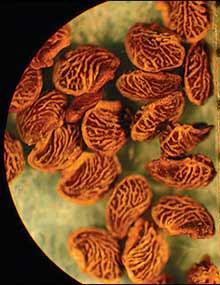
Missouri Weed Seeds, Page 41
Reviewed
Many of the members of Rosaceae (Rose family) are commonly grown as cultivated plants, including rose, apple, pear and strawberry. A notorious member, multiflora rose, is one of the state’s noxious weeds.
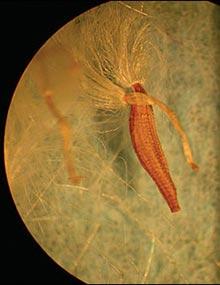
Missouri Weed Seeds, Page 09
Reviewed
Explore the diverse milkweed species in Missouri, featuring detailed seed images with millimeter rulers for accurate size reference.
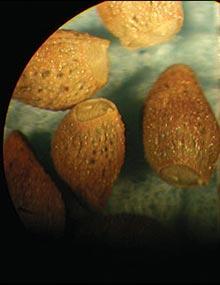
Missouri Weed Seeds, Page 12
Reviewed
Boraginaceae (Borage family) also includes several nuisance plants known as “beggar’s lice” because their fruits readily attach to clothing and other articles.
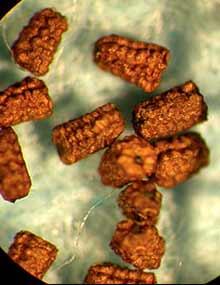
Missouri Weed Seeds, Page 44
Reviewed
Of the nearly 280 genera of Scrophulariaceae (Figwort family), at least 25 are known to be in Missouri. The genera that contain mullein and speedwell are among the most common.
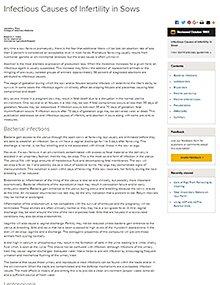
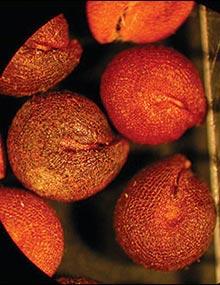
Missouri Weed Seeds, Page 15
Reviewed
Only a few members of Capparidaceae (Caper family), such as spider flower, occur in Missouri.
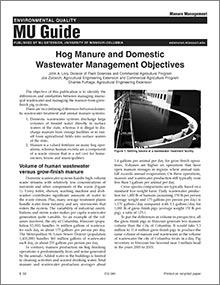
Hog Manure and Domestic Wastewater Management Objectives
Reviewed
The objective of this publication is to identify the differences and similarities between managing municipal wastewater and managing the manure from grow-finish pig systems.
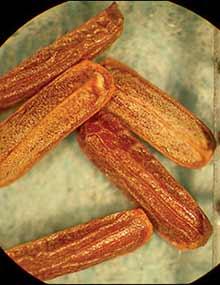
Missouri Weed Seeds, Page 47
Reviewed
Of about 90 known genera of Verbenaceae (Vervain family), only three occur in the state. Most prevalent are the vervains, with seven species, most commonly encountered throughout Missouri.

Managing Nitrogen to Protect Water Quality
Reviewed
How is nitrogen lost from the soil?Nitrogen is primarily lost by three pathways:

Missouri Weed Seeds, Page 18
Reviewed
At least 18 different Chenopodium genera members, also known as lambsquarters, are present in Missouri. Kochia is also another important member of Chenopodiaceae (Goosefoot family).
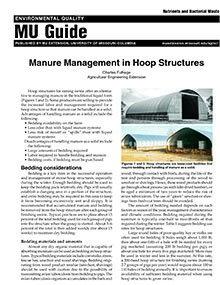
Manure Management in Hoop Structures
Reviewed
Hoop structures for raising swine offer an alternative to managing manure in the traditional liquid form. Some producers are willing to provide the increased labor and management required for a hoop structure so that manure can be handled as a solid. Advantages of handling manure as a solid include the following:
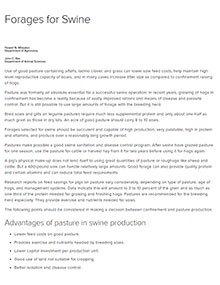
Forages for Swine
Reviewed
It is still possible to use large amounts of forage with the breeding herd. Visit our site to learn about using Forages for Swine.
